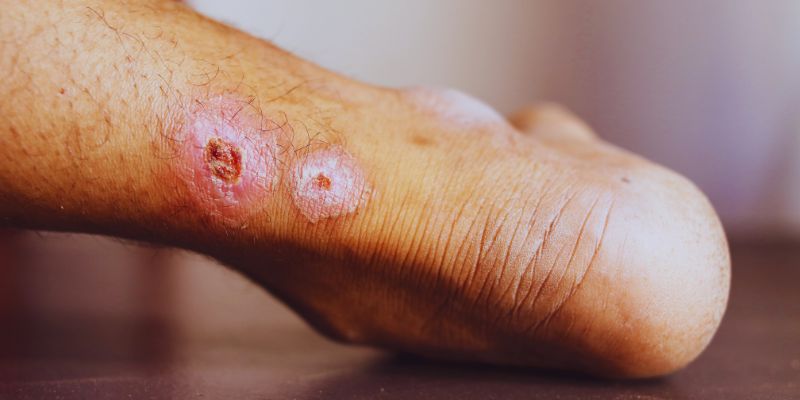Effective Tips for Managing Aches and Strains
Advertisement
Managing aches and strains effectively is essential for maintaining an active and healthy lifestyle. Whether it's a minor muscle pull or a lingering discomfort, addressing these issues promptly can prevent further complications. By incorporating simple strategies such as proper rest, targeted stretches, and maintaining good posture, you can ease discomfort and promote faster healing for your body.
Understanding Aches and Strains:
Strains and aches are typical physical ailments that may be anything from slight soreness to severe pain. Aches typically describe a dull or chronic ache in joints or muscles, often due to tension, overuse, or exhaustion. Strains, however, are muscle or tendon injuries that result from overexertion, overstretching, or faulty movement. Both conditions may arise in daily life, either during exercise, physical work, or even when doing routine activities.
Poor posture, abrupt physical exertion without warm-up, repetitive movements, and muscle tension due to stress are some of the main causes. Aging, poor hydration, or deficiencies in nutrients can also make one more susceptible to aches and strains.
Differentiating Between Minor and Severe Cases:
It is important to differentiate between mild aches or strains that may be treated with home remedies and serious ones that need medical care. Minor ones usually manifest as mild pain, temporary stiffness, or minimal swelling that resolves with rest, fluid intake, gentle stretching, or the use of ice or heat. These are typically self-limiting within a few days.
Serious cases, though, can include severe pain, bruising that can be seen, severe swelling, inability to move the involved area, or worsening of symptoms over time. These conditions can reflect underlying problems such as a tear in the ligaments, fractures, or long-term disorders such as tendinitis. If these symptoms should continue, consultation with a professional medical practitioner is recommended in order to avoid further damage and receive proper treatment. Identifying early the severity can result in improved outcomes and a quicker recovery process.
Immediate Remedies:

When dealing with injuries, taking immediate action can help alleviate pain and promote recovery. Here are some effective remedies:
1.Rest and Immobilization
Resting the affected area is crucial to prevent further damage and allow the body to heal naturally. Immobilization, such as using a brace or a splint, helps limit movement, providing stability and protection. Avoid putting pressure on the injured area, as this can exacerbate the condition.
2.Application of Ice or Heat
Applying ice is highly effective in the first 48 hours to reduce swelling and numb pain by constricting blood vessels. Use an ice pack wrapped in a cloth for 15-20 minutes at a time. After swelling decreases, heat can be applied to relax muscles and improve circulation.
Heating pads or warm towels work well for this purpose. Alternating between ice and heat can provide relief and speed up the healing process, but ensure to monitor skin sensitivity to avoid burns or frostbite.
Lifestyle Adjustments for Prevention:

Making proactive lifestyle changes can significantly reduce the risk of discomfort or chronic pain. Below are some practical adjustments you can consider:
1. Maintain a Healthy Diet
A balanced diet rich in fruits, vegetables, lean proteins, and healthy fats can support overall wellness. Proper nutrition helps reduce inflammation in the body, which is a common cause of chronic pain. Foods like salmon, walnuts, and spinach are excellent for promoting joint health and reducing discomfort. Staying hydrated is equally essential, as it helps your body function optimally and reduces muscle stiffness.
2. Regular Exercise
Engaging in regular physical activity strengthens muscles, improves joint flexibility, and enhances overall fitness. Low-impact exercises like yoga, walking, or swimming are especially beneficial for maintaining mobility without straining your body. Exercise also stimulates the release of endorphins, which act as natural painkillers. Establishing a consistent workout routine can be a long-term solution for managing and preventing discomfort.
3. Ergonomic Workspaces
Creating an ergonomic workspace can significantly reduce strain on your neck, back, and wrists. Ensure your desk, chair, and monitor are positioned correctly to promote proper posture. Using supportive tools like ergonomic keyboards or lumbar cushions can further enhance comfort. Take regular breaks to stretch and correct your position while working to minimize the risk of developing chronic pain over time.
4. Adequate Sleep
Quality sleep is crucial for the body to recover and rejuvenate. Poor sleep can exacerbate pain symptoms and lead to additional issues like fatigue. Create a relaxing bedtime routine and maintain a consistent sleep schedule to improve sleep quality. Consider optimizing your sleep environment by investing in a comfortable mattress and reducing distractions like noise or excess light during bedtime.
5. Stress Management Techniques
Chronic stress can amplify pain due to its effects on the body’s nervous system. Incorporate stress-relieving activities like meditation, mindfulness, or deep breathing exercises into your daily routine. Participating in hobbies or enjoying nature walks could also help lower stress levels.
When to Seek Professional Help
While minor injuries can often be managed at home, it's essential to seek professional help for severe or persistent symptoms. A healthcare professional can accurately diagnose the underlying cause of pain and recommend effective treatment options tailored to your needs. If you experience any of the following symptoms, consider seeking medical attention:
- Intense, unbearable pain
- Visible deformity or swelling
- Inability to move the affected area
- Symptoms that worsen over time
- Persistent discomfort despite home remedies and OTC medications
Conclusion:
Chronic pain can significantly impact daily life, but with proper care and attention, it is possible to find relief and improve overall well-being. By combining effective home remedies, stress management techniques, and prompt medical intervention when needed, you can address pain more effectively and prevent it from worsening. Listen to your body and prioritize self-care, but don’t hesitate to seek professional help when symptoms persist or escalate. Remember, pain management is a personalized process, and finding the right balance of strategies will empower you to live a healthier, more comfortable life.
On this page
Understanding Aches and Strains: Differentiating Between Minor and Severe Cases: Immediate Remedies: 1.Rest and Immobilization 2.Application of Ice or Heat Lifestyle Adjustments for Prevention: 1. Maintain a Healthy Diet 2. Regular Exercise 3. Ergonomic Workspaces 4. Adequate Sleep 5. Stress Management Techniques When to Seek Professional Help Conclusion:Advertisement












